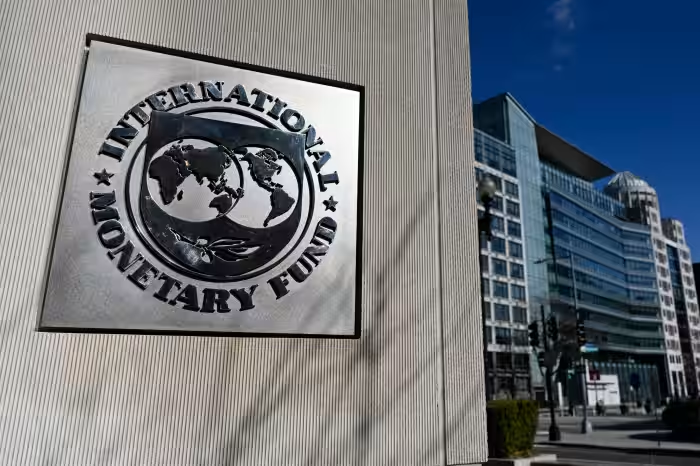The Asia-Pacific (APAC) region is at the forefront of the digital revolution, witnessing rapid advancements in technology that are reshaping industries, economies, and societies. As the world becomes increasingly digital, the region is uniquely positioned to leverage technological innovation to foster growth, enhance productivity, and address various socio-economic challenges. The rise of the digital economy has brought about a fundamental transformation in sectors ranging from finance and retail to healthcare and manufacturing. However, this transformation also presents challenges that require strategic thinking, investment in infrastructure, and policy innovation.
This article explores how Asia-Pacific countries can seize the opportunities presented by technological innovation in the digital economy. It will examine the key drivers of digital transformation in the region, the challenges that need to be addressed, and the strategies that governments, businesses, and individuals can adopt to thrive in an increasingly digital world.
1. The Rise of the Digital Economy in the Asia-Pacific Region
The digital economy refers to an economy that is based on digital computing technologies, which encompass everything from internet-based businesses and e-commerce to data analytics, artificial intelligence (AI), cloud computing, and the Internet of Things (IoT). Over the last two decades, the digital economy has expanded rapidly in the Asia-Pacific region, driven by several factors:
1.1. Increased Internet Penetration
The expansion of internet access across the region has been one of the most significant enablers of the digital economy. According to recent reports, more than half of the population in Asia-Pacific is now connected to the internet, with some of the highest growth rates seen in Southeast Asia and India. This wide reach of the internet provides a platform for businesses to access new markets, and for consumers to access goods, services, and information online.
1.2. Adoption of E-commerce
E-commerce has been a major driver of the digital economy in APAC. Countries like China, Japan, South Korea, and India have seen explosive growth in online shopping and digital payments. In China, the e-commerce giants Alibaba and JD.com have revolutionized the way people shop, while companies like Flipkart in India and Rakuten in Japan are making their mark in the region.
E-commerce is not just about consumer goods but also extends to services like online education, telemedicine, and financial services, which are all benefiting from the digital economy. With the COVID-19 pandemic accelerating the shift to online shopping and digital services, e-commerce in the region is expected to continue growing at a rapid pace.
1.3. Advancements in Artificial Intelligence and Automation
Artificial intelligence (AI) and automation are at the core of the digital transformation. In APAC, countries like China, Japan, and South Korea are investing heavily in AI research and development, particularly in sectors such as manufacturing, logistics, healthcare, and finance. These technologies have the potential to significantly increase productivity and efficiency, automate repetitive tasks, and unlock new business opportunities.
For example, AI-powered chatbots are becoming standard in customer service across industries, while AI algorithms are revolutionizing healthcare with more accurate diagnostics and personalized treatment plans. Robotics and automation are improving manufacturing processes, reducing labor costs, and enhancing supply chain efficiency.
1.4. Fintech Revolution
The rise of fintech (financial technology) has been another major development in the Asia-Pacific region. With many people in APAC still unbanked or underbanked, fintech is providing access to financial services through mobile phones and digital platforms. Countries like China, India, and Singapore are leading the charge in fintech innovation, with services ranging from mobile payments (like WeChat Pay and Alipay) to peer-to-peer lending, blockchain-based finance, and digital banking.
The fintech sector is playing a crucial role in financial inclusion, enabling millions of people to access financial services without relying on traditional banking infrastructure. As a result, APAC is seeing a surge in new startups, investments, and technological advancements in the financial sector.
1.5. Rise of Digital Platforms and Gig Economy
Digital platforms such as Uber, Grab, Airbnb, and food delivery services have transformed the way people work and consume services. The gig economy, driven by these platforms, is thriving in many APAC countries, offering flexible work opportunities, especially in the services and transportation sectors. These platforms have become an integral part of daily life in cities across the region.
At the same time, digital platforms also enable businesses to reach global markets more easily and cost-effectively, creating new opportunities for SMEs to expand internationally. The rise of such platforms is helping to democratize access to services, making it easier for people to participate in the digital economy.
2. Opportunities in the Digital Economy for Asia-Pacific Countries
With technological innovation rapidly transforming the region, several key opportunities arise for Asia-Pacific countries to capitalize on. These opportunities can drive economic growth, enhance social development, and help address challenges such as unemployment, poverty, and inequality.
2.1. Leveraging Digital Transformation to Drive Economic Growth
The digital economy offers APAC countries a chance to diversify their economic portfolios and reduce dependence on traditional industries. Countries such as Singapore, South Korea, and Japan are already leading the way in building smart cities, promoting green technologies, and fostering innovation ecosystems.
Countries like India and Vietnam, with large young populations and growing tech talent, are well-positioned to become global hubs for tech innovation, outsourcing, and digital services. By promoting digital entrepreneurship and facilitating access to venture capital, these nations can encourage the creation of new businesses, generate jobs, and increase GDP growth.
2.2. Improving Public Services and Governance
Governments in the APAC region can leverage technology to improve the delivery of public services. For example, digital platforms can enhance education through online learning programs, reduce administrative burdens through e-government services, and make healthcare more accessible through telemedicine.
Digital governance can also improve transparency and reduce corruption by enabling citizens to access information, submit complaints, and participate in decision-making processes online. With growing concerns over environmental sustainability, technology can help governments track and manage resources more efficiently, contributing to more sustainable development goals.
2.3. Boosting Financial Inclusion
Financial inclusion is a significant challenge in many APAC countries, particularly in rural and underserved areas. The rise of fintech has opened new pathways for people to access financial services, including mobile banking, microfinance, and insurance products tailored to low-income populations.
Countries like India and the Philippines have seen rapid growth in digital payment platforms, such as Paytm and GCash, which have enabled millions of people to participate in the formal economy. By expanding access to digital financial services, Asia-Pacific countries can unlock new economic opportunities, increase savings rates, and improve resilience to financial shocks.
2.4. Building a Digital Workforce
As automation and AI continue to transform industries, the demand for digital skills is rising. APAC countries can harness this demand by investing in education and training programs that equip their workforces with the necessary skills to thrive in a digital economy. For example, countries like South Korea and Singapore are already leading efforts to create digital talent pipelines through government initiatives and partnerships with private companies.
To capitalize on this opportunity, governments must focus on providing digital literacy programs, reskilling initiatives, and access to STEM (science, technology, engineering, and mathematics) education. Additionally, increasing the participation of women and marginalized groups in the digital workforce can help address inequality and boost overall productivity.

3. Challenges Facing the Asia-Pacific Region in the Digital Economy
While the opportunities presented by the digital economy are substantial, there are several challenges that Asia-Pacific countries must address to fully harness the potential of technological innovation.
3.1. Digital Divide
A significant challenge in the region is the digital divide between urban and rural areas, as well as between different socioeconomic groups. While large cities in APAC have seen rapid adoption of digital technologies, rural areas and low-income populations often lack access to reliable internet connections, smartphones, and other digital tools. Closing this digital gap is crucial to ensuring that the benefits of the digital economy reach all segments of society.
3.2. Data Privacy and Cybersecurity
As digital technologies proliferate, so do concerns around data privacy and cybersecurity. With vast amounts of personal and business data being generated, there is an increasing risk of data breaches, identity theft, and cyber-attacks. APAC countries must strengthen their cybersecurity frameworks and ensure that there are robust regulations in place to protect users’ data and privacy.
Governments need to work with the private sector to establish secure digital infrastructures and ensure compliance with international data protection standards, such as the European Union’s General Data Protection Regulation (GDPR).
3.3. Regulatory Frameworks
Another key challenge is the need for comprehensive and adaptable regulatory frameworks that can keep pace with the rapid evolution of digital technologies. Issues such as intellectual property rights, digital taxation, and platform regulation require urgent attention to ensure that the digital economy is fair, transparent, and beneficial to all stakeholders.
Countries in the APAC region need to adopt policies that foster innovation while ensuring that digital platforms operate within fair and accountable frameworks. International cooperation will be essential to create consistent standards for the regulation of digital technologies across borders.
4. Strategies for Seizing the Digital Economy Opportunities
To harness the full potential of the digital economy, Asia-Pacific countries should adopt the following strategies:
4.1. Invest in Digital Infrastructure
Investing in digital infrastructure, such as high-speed internet, cloud computing, and data centers, is essential to ensure that businesses and consumers have access to the technologies that drive the digital economy.
4.2. Encourage Digital Innovation and Startups
Governments should create favorable conditions for digital startups and innovation, including access to funding, talent, and markets. This can be achieved through tax incentives, venture capital support, and public-private partnerships.
4.3. Promote Inclusive Digital Growth
It is critical to ensure that the digital economy benefits all segments of society. By focusing on financial inclusion, education, and gender equality, countries can ensure that the digital economy becomes a tool for social mobility and economic equality.
5. Conclusion: A Path Forward for Asia-Pacific
The rise of the digital economy presents immense opportunities for the Asia-Pacific region to achieve sustained economic growth, increase social welfare, and create new industries and job opportunities. However, to fully capitalize on these opportunities, the region must address key challenges, including the digital divide, cybersecurity risks, and the need for robust regulatory frameworks.
By investing in infrastructure, promoting innovation, and ensuring inclusive growth, Asia-Pacific countries can position themselves as global leaders in the digital economy. With the right policies and strategies in place, the region can harness the power of technological innovation to build a more prosperous, resilient, and sustainable future.





























